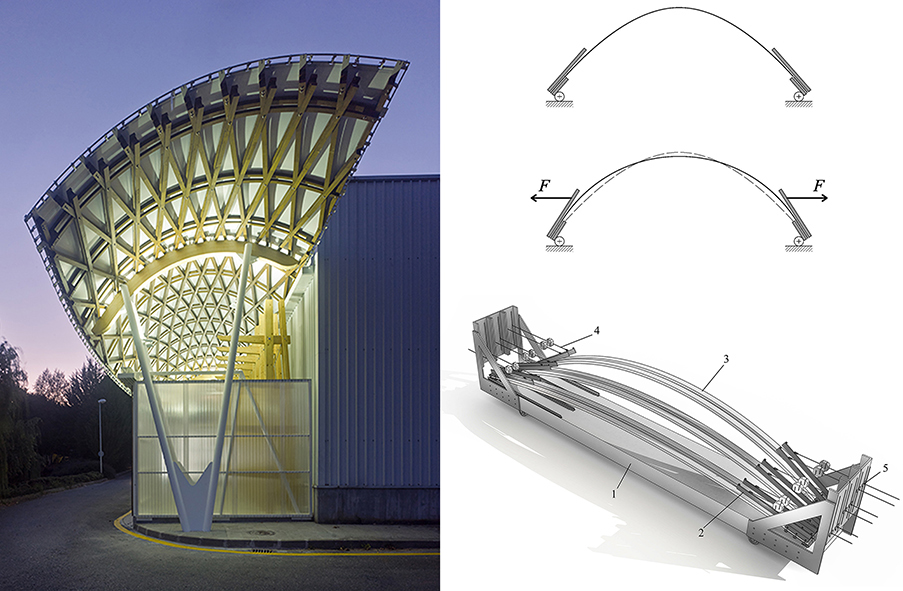
Abstract
Timber lattice shells are multi-layered structures of great interest for medium and long span lightweight solutions in structural and aesthetic terms. They are constructed by bending initially straight laths. This curving process can lead to high initial stresses in the laths and the possibility of overstressing under service loads. However, these initial stresses may decrease over time to acceptable levels due to the stress relaxation phenomenon. The quantification of stress relaxation over the long-term is therefore a key aspect in the structural analysis of lattice shells. Unfortunately, no information is given in the standards and the available experimental data comes from short-term research, so that engineers have to make assumptions which are not properly verified. This work provides experimental results on long-term bending stress relaxation curves of dry Eucalyptus globulus L. laths bent with three different curvature radii (different stress levels) over two years. For this purpose an original test device was developed and used, overcoming the drawbacks of the other devices used to date in most experimental research. Initial bending stresses decreased very quickly during the first weeks of measurements. After two years, the bending stresses fell by from 45% to 66% of their initial values depending on their curvature radii, which implies an important structural reserve recovery.
https://doi.org/10.1016/j.conbuildmat.2018.10.224
